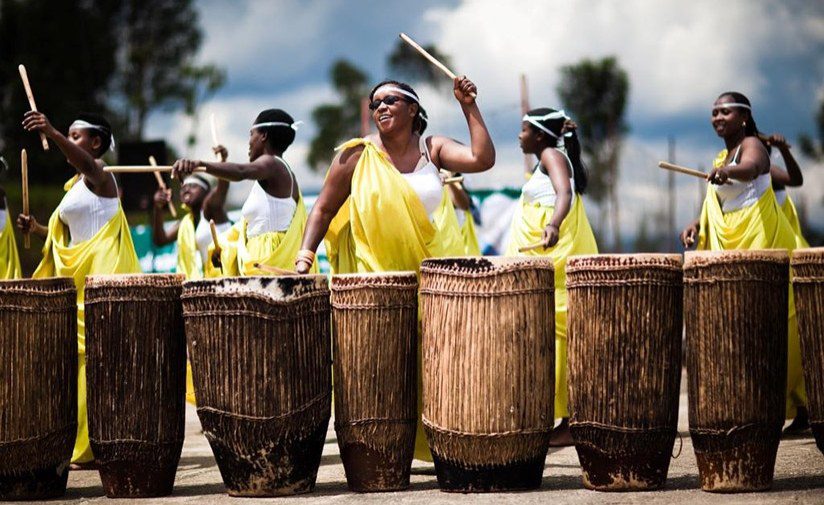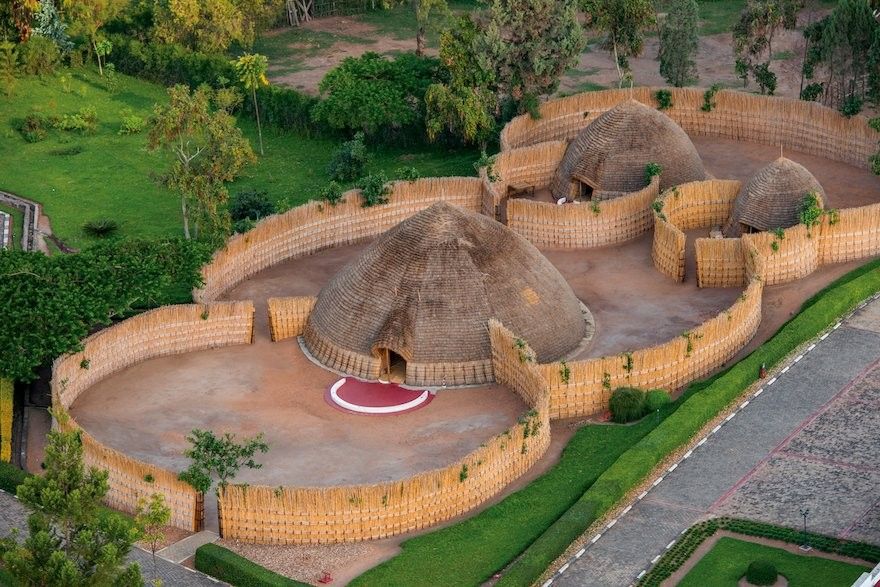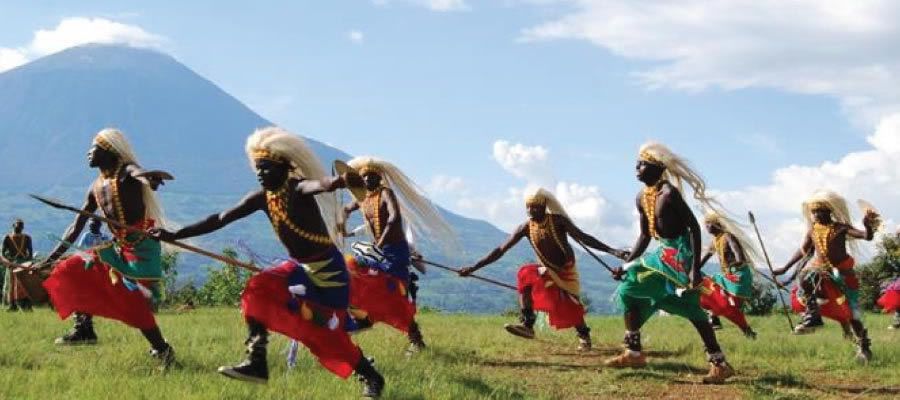Discover Rwanda
Cultural Tours in Rwanda
Rwanda culture tours are a fantastic alternative for a one-of-a-kind vacation experience. This lovely East African country is rich in culture and traditions, as well as a fascinating history. There is so much to see and do in Rwanda, from experiencing traditional villages and learning about local customs and beliefs to visiting museums and sites.
Rwanda, sometimes known as the “Country of a Thousand Hills,” is one of the most intriguing African nations to visit. While gorilla trekking is Rwanda’s most renowned tourist attraction, the nation is not entirely about apes. Mountain hikes, wildlife drives, motorcycling, nature walks, and cultural trips are all popular activities in Rwanda. The indigenous people’s cultural traditions were passed down from generation to generation through cultural ceremonies, language, tales, dress style, and a kingdom that has since been disbanded.
What can I expect on Cultural Tours in Rwanda?
Rwanda cultural tours are an engaging experience that will immerse you in the country’s culture and traditions. You’ll meet people, learn about their traditions, and get a sense of their way of life. You’ll go to museums, historical sites, and cultural institutions to learn about Rwanda’s history and art.
What makes the Rwandan Culture Unique?
Rwandans share cultural values such as solidarity, patriotism, social cohesiveness, resilience, and hard work, to name a few. Kinyarwanda is the common language used across the nation. English, French, and Kiswahili are the other official languages.

How many cultures are in Rwanda?
There are three ethnic groupings. Historically, each of Rwanda’s three ethnic groupings has been associated with a different component of the economy: the Tutsi who are known to be traditional herdsmen or cattle keepers, the Hutu who are majorly farmers, and the Twa who are predominantly known to be forest dwellers.
Which places can I visit during Cultural Tours in Rwanda?
There are so many cultural and historical places that you can visit during your cultural tour in Rwanda, most especially if you are a first-time visitor in the country. Among some of the places that you can visit on a cultural tour in Rwanda include;
Kigali Genocide Memorial Centre.
The Genocide Memorial Sites are one of Rwanda’s most popular tourist attractions. This is undoubtedly Rwanda’s most popular museum. It was created in commemoration of the approximately 250,000 persons died during the Rwanda genocide.
The Museum is arranged into three primary sections: one for commemorating the children who were slain, another for adults, and one for genocides that occurred in other regions of the world. This museum will help you comprehend what happened before and after the genocide. The government believes that the museum will serve as a continual reminder of the genocide’s horror, so that future generations would never let it to happen again.
Kandt House Museum.
The National History Museum, formally known as the Kandt House Museum, is one of the most important cultural and historical places in Rwanda. It was the first modern building in Rwanda and was named after Dr. Richard Kandt. Kandt was Rwanda’s first governor during German colonial authority.
The Museum is organized into three sections. The first display area depicts life before the country was colonized. The second section represents life during the colonial era, while the third section depicts life after Rwanda gained independence. Visit this Museum to see rare Rwandan and German World War I photographs. The museum also displays the country’s fauna, flora, and geological aspects.
The King’s Palace in Nyanza.
The King’s Palace is a magnificently built thatched home in the style of a beehive. Nyanza was once Rwanda’s capital. According to oral tradition, it was the site of battles and power struggles. For a long period, the monarchs relocated the court from one location to another until settling in Nyanza. In the kingdom’s capital, up to 2,000 people lived in huts built using the same techniques as these. Local herdsmen care after and sing to a few long-horned Inyambo cattle from the king’s herd in order to maintain the distinctive custom.

The magnificent cows, who were part of the broader Ankole breed, played an important role in the king’s honor ceremonies. They gained schooling and wore beautiful jewelry. Rwanda was no longer a monarchy when it earned independence from colonial domination in 1962. However, Inyambo breeding and grooming are still managed by the Rwanda Agriculture Board.
The Ethnographic Museum/ National Museum in Butare.
In the late 1980s, Belgium’s King Badouin presented the Ethnographic Museum, which has one of Africa’s greatest ethnographic collections. The seven galleries showcase historical, anthropological, artistic, and archaeological items with visual aids, providing visitors on Rwanda Cultural Tours with a deep insight into Rwandan culture. The exhibitions begin with geographical and geological displays before going on to hunting, agriculture, animal husbandry, pottery, weaving, and woodworking products.
Traditional dress and construction techniques are also depicted, as is the societal significance of cattle. Descendants of the royal herd may still be seen in the adjacent King’s Palace in Nyanza. The last chamber explores traditional traditions and beliefs, as well as history, culture, poetry, oral tradition, and cosmology.
Visit Banda Cultural Village in Nyungwe Forest National Park.
This intriguing cultural center is located within Nyungwe National Park, near to the park offices at Uwinka and the Canopy Walk. Don’t forget to stop in the village if you’re visiting Nyungwe National Park for nature hikes or Chimpanzee trekking.
When you arrive at the location, you will be greeted by Intore dancers and guided by a local Guide. The most intriguing thing to observe in the hamlet is how native medicines and traditional baskets are created. You could be asked to assist grind corn with local implements and then prepare a local meal. If you’re lucky, you could come on the day of a traditional wedding ceremony and be among the witnesses.
Ibyi’wacu or The Gorilla Guardians Village.
This, also known as the Ibyiwacu cultural village, is undoubtedly Rwanda’s most visited cultural attraction, owing to its closeness to where travelers may see mountain gorillas. The Cultural site is located in Musanze area and was created by a former Volcanoes National Park warden. The warden wished to construct a cultural center that would provide work to former poachers while also displaying to tourists everything positive about the people’s culture.
You will enjoy seeing Batwa pygmies hunt, traditional Intore dancers, learning how to make Kinyarwanda meals, and drinking traditional beer at the Iby’iwacu Cultural Center. There is also the option of dressing up as a King or Queen and living in a thatched palace.
Kitabi Cultural Centre in Nyungwe National Park.
This cultural center is also located near the main entrance to Nyungwe Forest National Park. The last King of Rwanda constructed his palace here rather than at Nyanza. It is one of Rwanda’s most popular cultural sites and a popular stopover for travelers going Nyungwe for chimp trekking. The Center is made up of various traditional huts as well as the King’s palace, which is guarded. Everyone is dressed in striking traditional robes, pleasant, and ready to make sure you have a good time while you’re there. A tour guide will take you to observe local women make traditional baskets, beads, and other souvenirs for sale.
Homestead Cultural Tours
Spend time with a local family during your Rwanda Cultural tours to get a true sense of rural Rwandan village life. Participate in everyday duties such as crop planting or field hoeing before making and eating traditional Rwandan meals and spending time conversing with your hosts. Your day will conclude with a weaving workshop and the option to purchase locally manufactured handicrafts woven by your family.
Umuganda in Rwanda
There are various festivals that bring the people of Rwanda together and are held throughout the year. Every last Saturday of the month, “Umuganda” is arranged in Kigali to allow locals to clean up the streets. Residents must attend the event between 8 a.m. and 12 a.m. While residents clean the city, no cars are allowed on the streets, and no offices are open. You may volunteer as a tourist to help with garbage collection, road cleaning, and weed removal.

Kwita Izina Cultural Festival in Rwanda
“Kwita izina” is another intriguing festival. Every October, a ceremony is held in Volcanoes National Park to name all newborn born mountain gorillas. Tourists, worldwide celebrities, environmentalists, gorilla physicians, politicians, and even the president attend the event. Finally, there is the “Ukwibuka” festival, which is held in April. This incident is remembered not only in Rwanda, but in nearly every country across the world. It is the official day for remembering those who perished during the 1994 Rwanda massacre. You don’t have to be in Rwanda to demonstrate your support for the people. All you have to do is go to the nearest Rwandan embassy to find out how to join.
The Presidential Palace Museum in Kigali.
If you want to read about the immediate incident that triggered the 1994 genocide, here is the place to go. The Museum is about two kilometers from Kigali’s city center. It is the former state residence of Rwanda’s former president, Juvenal Habyarimana, before his Falcon 50 airliner was shot down on April 6, 1994. The jet crashed into the presidential compound, and the wreckage can still be seen today. When word got out that the presidents had been assassinated, Hutu fanatics started a full-fledged genocide, killing over 800,000 Tutsi. The resident Guide will tour you through the mansion, including the previous president’s secret quarters, a presidential nightclub, and other attractions.
Urutare Rwa Ngarama.
This big rock may be seen in the Gatsibo district. The rock has particular characteristics and is thought to have been made for King Ruganzu Ndoli. Ruganzu was an ancient Rwandan ruler. According to local mythology, King Ruganzu imbued the rock with magical properties that caused it to vibrate when struck by a stone, metal, or human foot. The King was considered to have mysterious abilities that he employed to keep his subjects under control.
Ntarama Genocide Memorial Centre in Kigali.
This memorial is located in southern Kigali. Approximately 5,000 individuals are buried outside of a church. Beautiful sceneries and gardens have been added to the property. Human remains and personal items of genocide victims may still be found in the inside. They were purposefully kept inside to remind future generations of a difficult period in the country’s history.
Ryamurari Cultural Centre.
This magnificent archeological site may be discovered in the Nyagatare neighborhood (on top of a hill). It was the capital of the Ndorwa Kingdom before becoming a part of Rwanda. Archeologists discovered cow bones, cow manure, and grinding stones, indicating that the people who lived there were both livestock caretakers and engaged in subsistence cultivation. Tourists like yourself and geologists alike come to see the ancient buildings and incredible earthworks.
Nyamata Genocide Museum.

Nyamata is one of the most popular genocide memorials. Approximately 10,000 people had entered the Nyamata Catholic church, begging for mercy from the murderers. Instead, grenades were hurled at them or used to unlock the doors, and everyone was then shot/hacked to death. A guided tour of the site leads you into the chapel, where you can witness gunshot holes and bloodstained clothing, among other things. After seeing the cathedral, guests are led outside to a mass grave where the deceased were buried.
Visit Inema Arts Centre
In Kigali, two brothers founded this, center. It is one of Kigali’s most popular artisan centers. The Inema Center brings together some of the best local artists as well as newcomers still learning the ropes. Visit this Center if you’re looking for unique Rwandan art that depicts the country’s culture, animals, natural resources, and geographical aspects. If you visit on a good day, you may expect to be entertained by resident Intore cultural performers or to attend a fashion display.
Bugesera Reconciliation Village.
For decades, there was conflict between Hutus and Tutsis. Prior to April 1994, this tension had reached unthinkable dimensions. When President Juvenal Habyarimana’s jet was shot down in April 1994, it triggered one of history’s deadliest genocides. The government leveraged tribal emotions at the time to compel Hutus to take up guns against the minority Tutsi. Hutu fanatics began brutally murdering people they had known for years as friends, lovers, and neighbors.
The Bugesera Reconciliation Village was one of the most significant endeavors to repair scars. Those who had struggled to forgive one another as a result of the 1994 genocide may come here for reconciliation and depart as friends. People who still have grudges against others might visit the village to view instances of successful reconciliations. You may also visit Bugesera Reconciliation Village as a visitor and understand the power of forgiveness even in the most challenging situations.
Utubindi Twa Rubona.
This is yet another fascinating historical and archaeological site in Rwanda. It is located in Tubindi Village (Gatsibo district), 4 kilometers from Kayonza Nyagatere’s major road. The site is home to seven distinct clay pots that are said to have been dug by King Ruganzu 11 while traveling with his warriors from Karagwe. The clay pots were used by the King to gather water for his parched troops. Aside from the clay pots, the site also contains the bones of the King.
Museum of National Liberation.
This museum, known locally as “Umurindi w’intwari,” helps portray the narrative of the Rwanda Patriotic Front (RPF)’s enormous difficulties, resolve, and heroism as they sought to stop the genocide and free the country in 1994. It is located 80 kilometers from Kigali.
Visiting this museum is also a good chance to learn about the events that led up to, during, and after the 1994 genocide. There are several artifacts, books, movies, and papers available, including the Arusha Agreement. This Agreement demonstrates that efforts were made to bring government and RPF forces to a cease-fire even before the massacre began. The museum is built atop a bunker that served as the RPF leader Paul Kagame’s headquarters.
In summary, Cultural tours in Rwanda are such a great way to learn more about the unique Rwandan cultures and also interact with the local people. It is through a cultural tour that you will truly get a deeper understanding of the country’s past and present heritage; not forgetting, you will come to realize that Rwandans are some of the most hospitable people in Africa!






